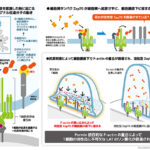2024-02-07 カロリンスカ研究所(KI)
◆インドでの熱波の健康リスクをマッピングした新しい研究によると、最も極端な熱波が短期間で最も死亡率に影響を与える一方、時間の経過とともに最も多くの命を奪うのは穏やかな熱波です。これは、穏やかな熱波がより一般的であるためです。
◆国際的に熱波の定義については一致しておらず、異なる条件に基づいて異なる国で異なる定義が使用されています。今後、熱波がより頻繁になると予想されるため、一時的に気温が上昇することの健康リスクについてさらに調査する必要があります。
<関連情報>
- https://news.ki.se/researchers-have-mapped-mortality-due-to-heat-waves
- https://www.sciencedirect.com/science/article/pii/S0160412024000473
インドにおける熱波の全死因死亡率への影響:包括的複数都市研究 Impact of heatwaves on all-cause mortality in India: a comprehensive multi-city study
Jeroen de Bont, Amruta Nori-Sarma, Massimo Stafoggia, Tirthankar Banerjee, Vijendra Ingole, Suganthi Jaganathan, Siddhartha Mandal, Ajit Rajiva, Bhargav Krishna, Itai Kloog, Kevin Lane, Rajesh K Mall, Abhiyant Suresh Tiwari, Yaguang Wei, Gregory A. Wellenius, Dorairaj Prabhakaran, Joel Schwartz, Poornima Prabhakaran, Petter Ljungman
Environment International Available online:26 January 2024
DOI:https://doi.org/10.1016/j.envint.2024.108461

Highlights
•Comprehensive multi-city study across the largest cities in India.
•Strong evidence of heatwaves impact on daily mortality.
•Longer and more intense heatwaves are linked to an increased mortality risk.
•Higher heatwave-related deaths with shorter and less extreme heatwaves.
•Policymakers should consider both heatwave definitions and their associated burden.
Abstract
Background
Heatwaves are expected to increase with climate change, posing a significant threat to population health. In India, with the world’s largest population, heatwaves occur annually but have not been comprehensively studied. Accordingly, we evaluated the association between heatwaves and all-cause mortality and quantifying the attributable mortality fraction in India.
Methods
We obtained all-cause mortality counts for ten cities in India (2008-2019) and estimated daily mean temperatures from satellite data. Our main extreme heatwave was defined as two-consecutive days with an intensity above the 97th annual percentile. We estimated city-specific heatwave associations through generalised additive Poisson regression models, and meta-analysed the associations. We reported effects as the percentage change in daily mortality, with 95% confidence intervals (CI), comparing heatwave vs non-heatwave days. We further evaluated heatwaves using different percentiles (95th, 97th, 99th) for one, two, three and five-consecutive days. We also evaluated the influence of heatwave duration, intensity and timing in the summer season on heatwave mortality, and estimated the number of heatwave-related deaths.
Findings: Among ∼3.6 million deaths, we observed that temperatures above 97th percentile for 2-consecutive days was associated with a 14.7% (95%CI, 10.3; 19.3) increase in daily mortality. Alternative heatwave definitions with higher percentiles and longer duration resulted in stronger relative risks. Furthermore, we observed stronger associations between heatwaves and mortality with higher heatwave intensity. We estimated that around 1116 deaths annually (95%CI, 861; 1361) were attributed to heatwaves. Shorter and less intense definitions of heatwaves resulted in a higher estimated burden of heatwave-related deaths.
Conclusions
We found strong evidence of heatwave impacts on daily mortality. Longer and more intense heatwaves were linked to an increased mortality risk, however, resulted in a lower burden of heatwave-related deaths. Both definitions and the burden associated with each heatwave definition should be incorporated into planning and decision-making processes for policymakers.


